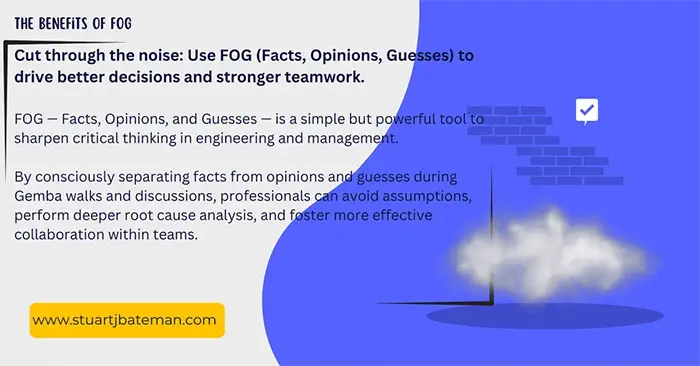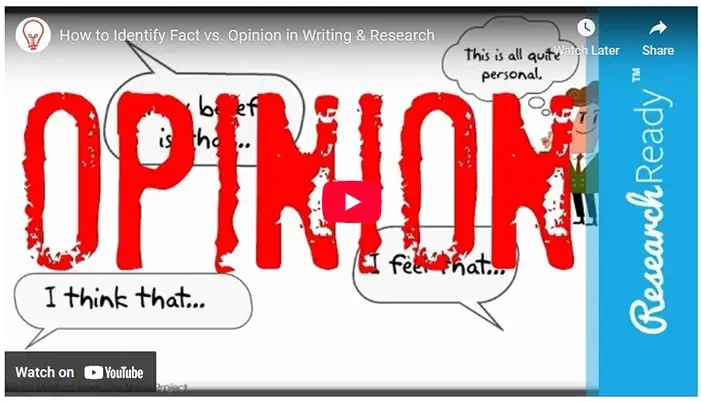What is FOG (Facts, Opinions and Guesses) and how to use it

You don’t rise to the level of your goals, you fall to the level of your systems. – Atomic Habits
What is FOG (Facts, Opinions, and Guesses)?
FOG, short for Facts, Opinions, and Guesses, has been a concept circulating for some time, although it only caught my attention in recent years. Personally, I advocate for vigilance against our tendency to make assumptions, as they can often lead to errors.
However, maintaining a critical thinking mindset at all times can be taxing. Unfortunately, I’ve observed numerous instances in various professional settings where individuals propose solutions without grounding them in factual evidence.

My experience integrating FOG into my daily work routine
In light of this, I view FOG as a valuable management tool. During Gemba walks and discussions with operators regarding manufacturing issues, I consciously apply the FOG framework.
This involves carefully parsing through the information gathered, distinguishing between opinions and guesses, and extracting the factual elements.
These facts serve as the foundation for further analysis, often utilizing methodologies like the 5 Whys or Ishikawa diagrams to uncover the root cause of issues.
Moreover, I find that FOG is instrumental in managing people effectively. By understanding the nuances of facts, opinions, and guesses, I can ask targeted questions that lead to meaningful solutions for individuals’ work-related challenges. This approach fosters collaboration and empowers teams to work together towards shared goals.
Here’s a great video I found on YouTube that explains how you can tell the difference between Facts & Opinions:

How do you uncover the facts in any situation?
In engineering, uncovering the truth behind an issue often means cutting through FOG—Facts, Opinions, and Guesses. While opinions and guesses aren’t facts, they can still be valuable starting points.
Why Opinions Matter (at First)
When you’re starting from scratch:
- Opinions from frontline workers can point you toward potential causes.
- Collecting multiple opinions allows you to identify recurring patterns and trends.
- These insights help guide initial observations and data collection.
Moving from Opinions to Facts
Once you’ve gathered enough perspectives, it’s time to validate them:
Tick Sheets & Monitoring: Create checklists to track observations and verify assumptions.
Ask Questions: Tools like SMED (Single-Minute Exchange of Die), VSM (Value Stream Mapping), 5Y Analysis, and the Ishikawa (Fishbone) Diagram all rely on structured questioning.
Frontline Engagement: Speak with multiple team members to build a clearer picture.
The End Goal?
- Identify significant factors causing the issue.
- Use reliable data collection and analysis methods to understand the root cause.
- Design a solution backed by facts, not assumptions.
Remember: Every great investigation begins with the right questions. Keep digging, keep questioning, and let the facts guide your decisions.
Resources – (External) – Critical thinking
Here’s some websites I use to improve my own thinking, its also a great place to develop your own thinking so that you focus on the facts –
Resource – (Internal) – Personal Development
Below are links to my 5 part series on Personal development:
- Making mistakes / assumptions and being wrong
- Can you detect Baloney
- First principles thinking
- Do you think it’s better to win?
- The Socratic method – Critical thinking



What are your thoughts? Have I covered everything or is there more you know and would like to share?
I’m always learning and improving this site and my blogs, so please feel free to get in touch with me via LinkedIn or this site to discuss any topics I have covered.
If you’re having trouble finding ways to progress check out these sites filled with free learning tools:

